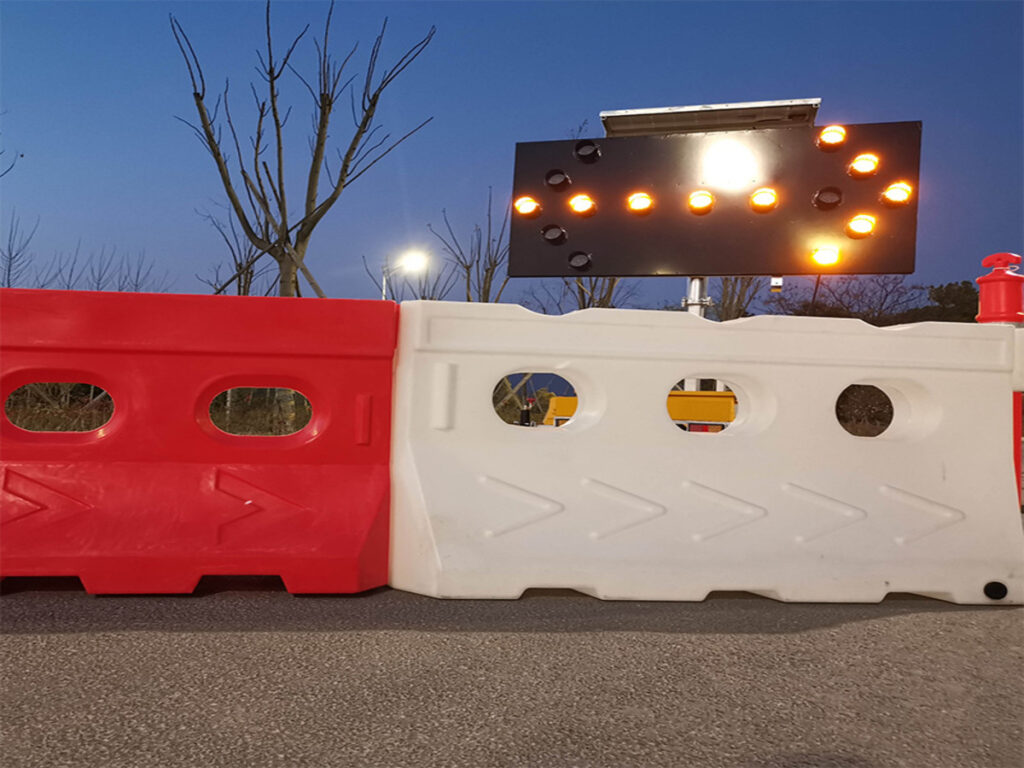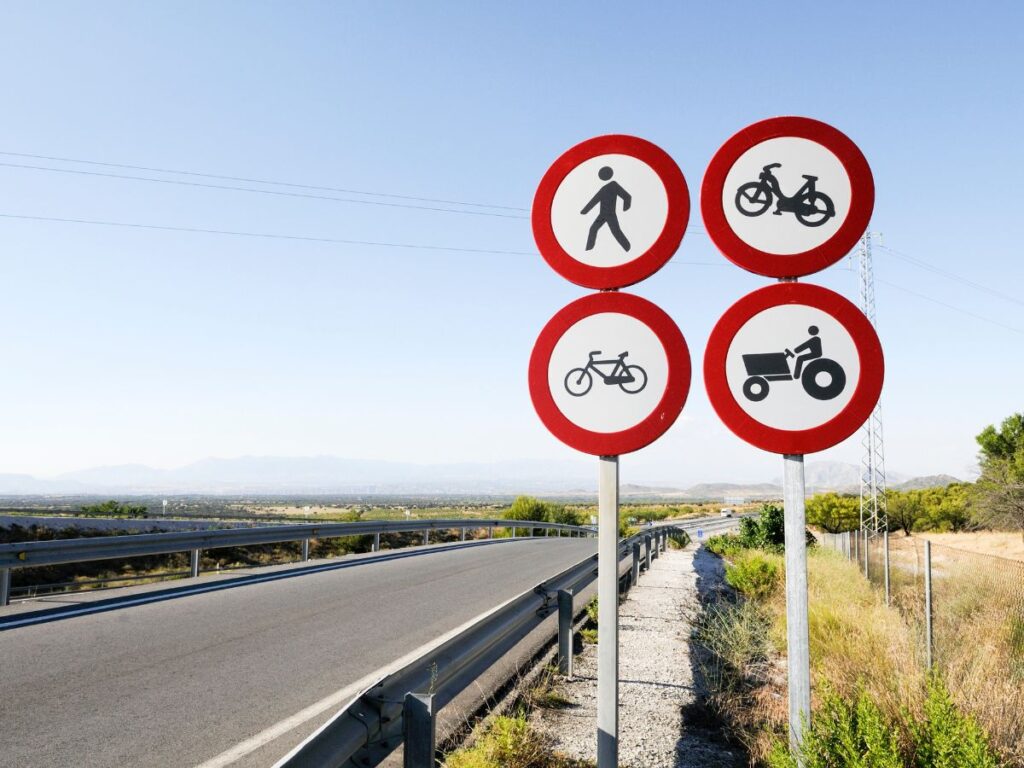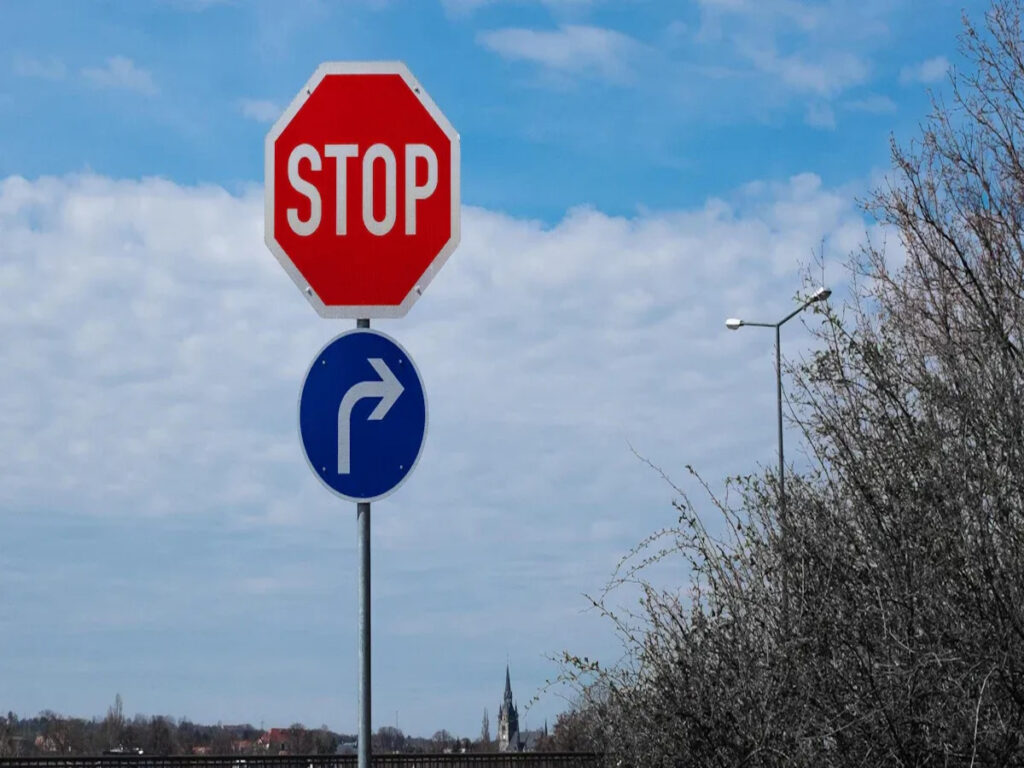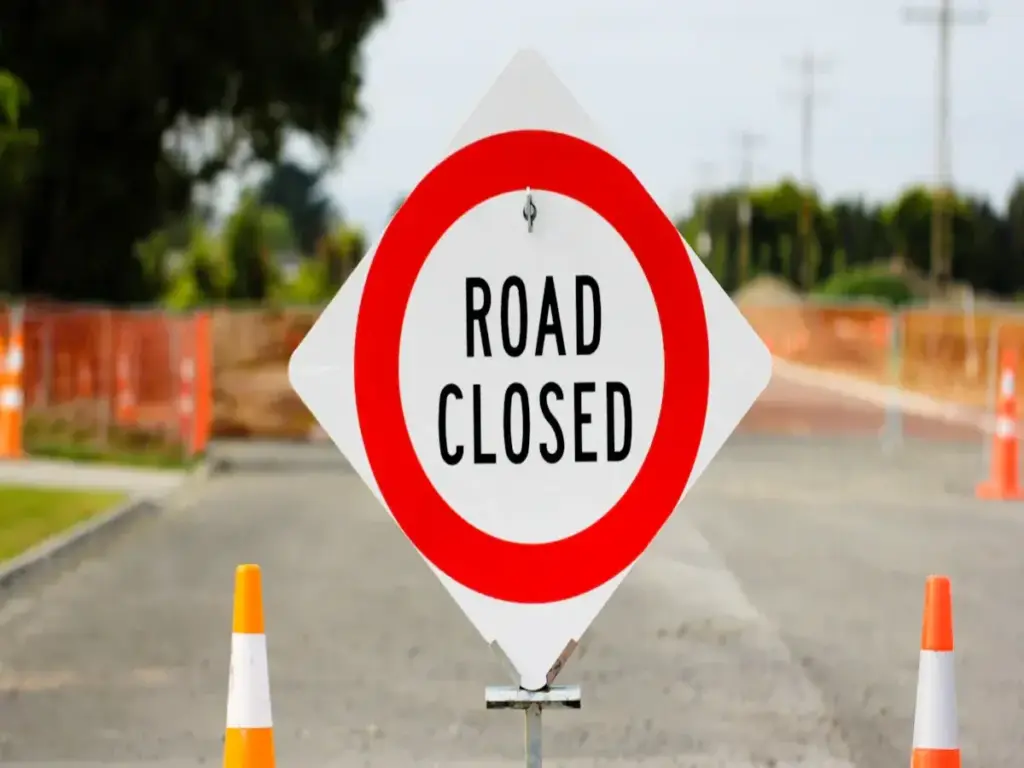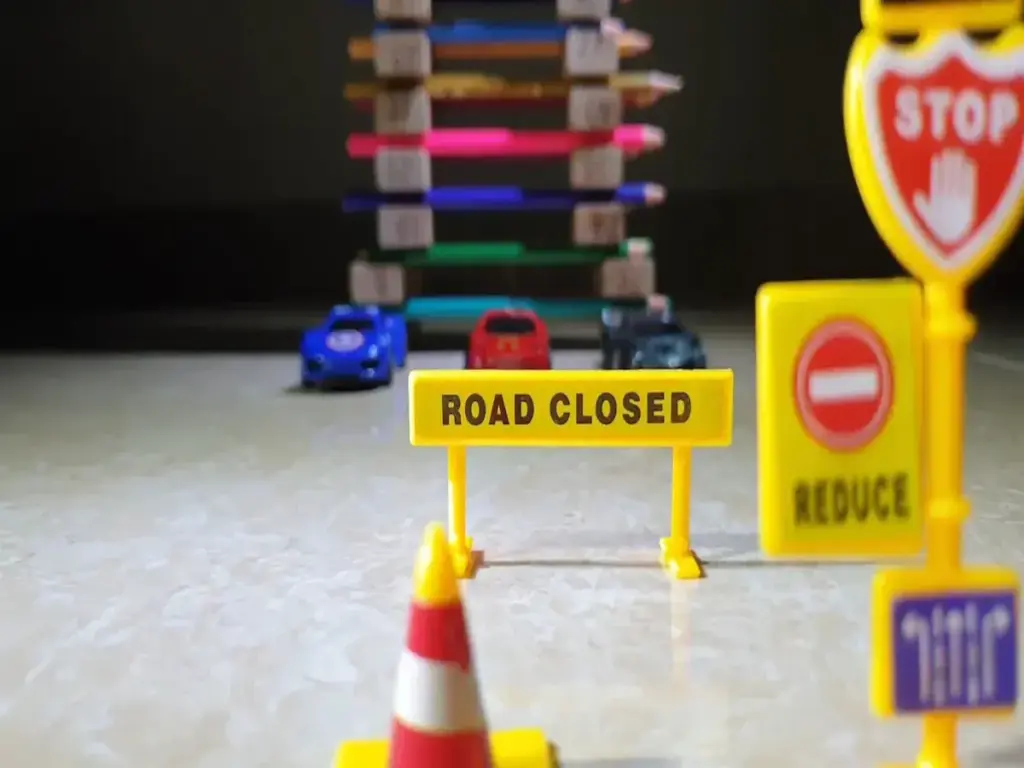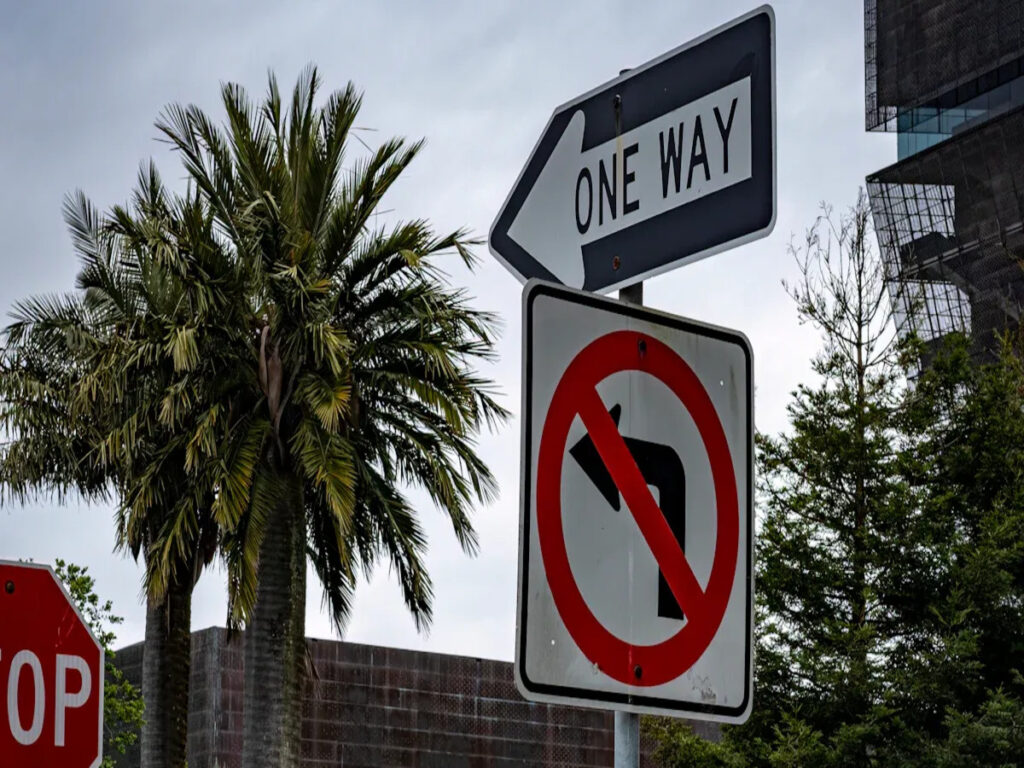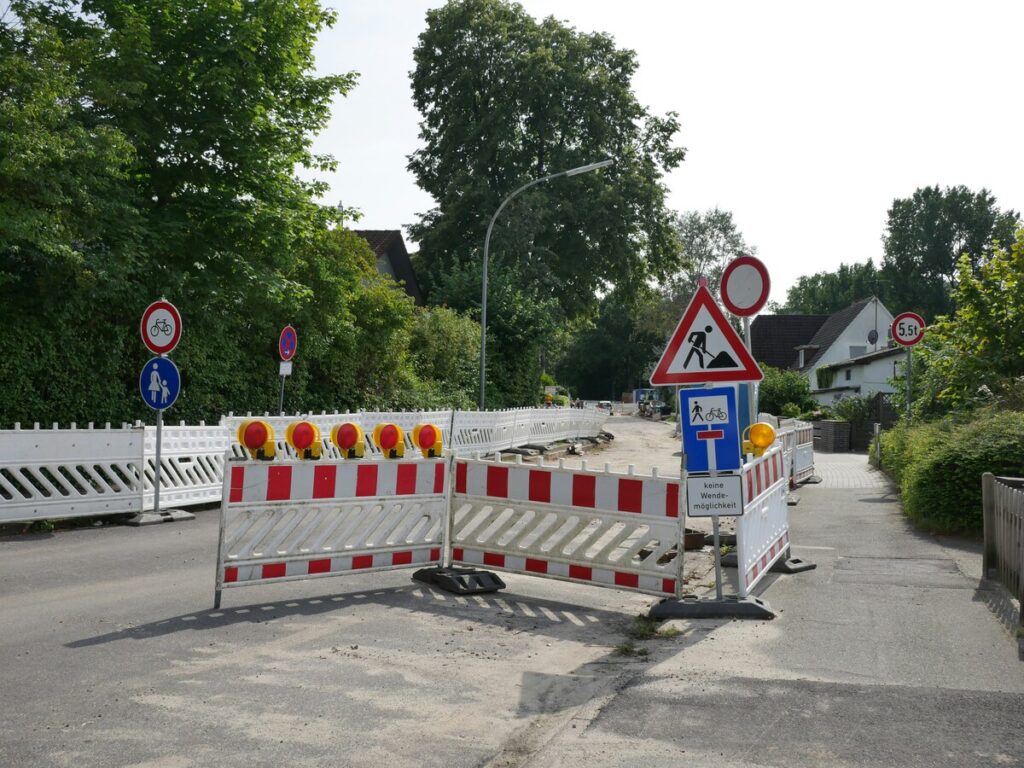
Mélanger les barrières de sécurité et les barricades de sécurité sur une route très fréquentée peuvent entraîner de graves conséquences. Une utilisation incorrecte des obstacles peut mettre les travailleurs en danger, violer les réglementations de sécurité, et entraîner des problèmes juridiques coûteux. Les barrières de sécurité sont cruciales pour protéger les travailleurs et les conducteurs en empêchant les accidents et en minimisant les dommages dans les accidents. Ces barrières, comme des modèles certifiés de la purée, sont rigoureusement testés pour la sécurité. L'utilisation des bonnes barrières garantit que les projets restent dans les délais, Évitez les problèmes juridiques, et maintenir des normes de sécurité élevées.
Optraffic offre une large gamme de barrières de sécurité qui répondent aux normes les plus élevées de l'industrie. Nos produits sont conçus pour offrir une protection maximale et assurer la conformité aux réglementations de sécurité, Garder votre chantier. Explorez notre sélection de barrières de sécurité fiables aujourd'hui.
Principaux à retenir
- Les barrières de sécurité éloignent les voitures des endroits dangereux. Ils protègent les travailleurs et les conducteurs sur des emplois occupés ou longs.
- Les barricades de sécurité aident à avertir et à guider les personnes et les voitures. Ils sont bons pour les travaux courts, événements, ou des lieux qui changent souvent.
- Les barrières sont fortes et lourdes. Des machines sont nécessaires pour les mettre en place. Les barricades sont légères et faciles à déplacer. Vous pouvez les configurer à la main.
- Choisir le bon dispositif de sécurité rend les routes et les sites plus sûrs. Il aide à suivre la loi et arrête les accidents et les retards.
- Regardez toujours les règles de sécurité locales. Choisissez les fournisseurs de confiance afin que les barrières et les barricades répondent aux bonnes normes.
Quelles sont les barrières et les barricades?
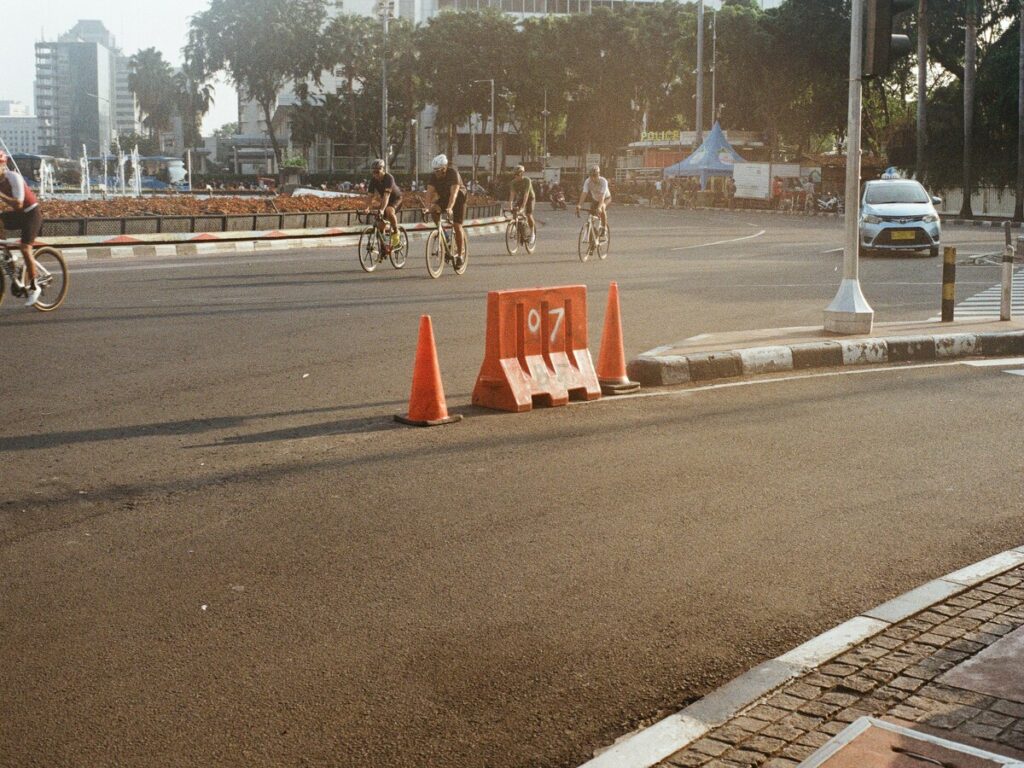
Définitions
Les barrières et les barricades sont toutes deux utilisées pour garder les gens en sécurité sur les routes et les sites de construction, Mais ils ne font pas le même travail.
- Une barrière est un outil qui fait un bloc solide. Il peut arrêter ou déplacer des voitures qui sortent de la route. Il existe différents types de barrières, comme ceux le long de la route, au milieu, à côté, ou ceux que vous pouvez déplacer.
- Une barricade est un outil qui donne un avertissement clair. Il indique aux conducteurs où se trouvent les dangers ou quel chemin. Les barricades ne peuvent pas empêcher les voitures de bouger. Ils aident à montrer le trafic où aller et assurer la sécurité des travailleurs en marquant les points risqués.
Ces significations proviennent de groupes comme Aashto et le Manuel sur les dispositifs de contrôle de la circulation uniformes. Les barrières doivent passer des tests de collision durs pour s'assurer qu'ils gardent les gens et les choses en sécurité.
Importance dans la sécurité de la circulation
Les barrières et les barricades aident à arrêter les accidents et les blessures sur les routes et les sites de construction. Les barrières gardent les travailleurs et les gens qui marchent en sécurité en empêchant les voitures d'entrer dans des endroits dangereux. Ils protègent également les choses et divisent le trafic. Les barricades utilisent des couleurs vives et des pièces brillantes pour avertir les conducteurs des changements ou des dangers. Ils aident les voitures à se déplacer en toute sécurité dans les zones de travail et à éloigner les gens du préjudice.
| Rôle | Description |
|---|---|
| Barrières | Faites un bloc fort pour arrêter ou déplacer les voitures, Arrêter les collisions. |
| Barricades | Donner des signes clairs, Avertir les moteurs et montrer des moyens sûrs. |
| Zones de travail | Réduire le trafic dans des endroits risqués et garder les travailleurs et les gens en sécurité. |
| Normes | Besoin d'être en sécurité dans les accidents et de bien fonctionner pour les barrières et les barricades. |
La sécurité routière s'améliore lorsque ces outils sont utilisés dans le bon sens. Ils aident à contrôler comment les voitures se déplacent, Arrêter les embouteillages, et rendre les endroits plus sûrs pour tous.
Confusion commune
Beaucoup de gens mélangent des barrières et des barricades parce qu'ils apparaissent tous les deux sur les routes et les sites de construction. La plus grande différence est ce qu'ils font. Les barrières peuvent arrêter ou déplacer des voitures, mais les barricades ne font qu'avertir ou guider. Utiliser le mauvais peut entraîner un danger et enfreindre la loi. Les constructeurs et les ouvriers routiers doivent savoir quel outil utiliser pour assurer la sécurité de tous et respecter les règles..
Barrières
Que sont les obstacles à la sécurité routière?
Les barrières de sécurité routière sont très importantes pour assurer la sécurité des personnes. Ces barrières forment un mur solide entre les voitures, ouvriers, Et les gens marchent. Des barrières de sécurité empêchent les voitures d'entrer dans des endroits dangereux. Ils aident les voitures à se déplacer en toute sécurité dans les zones de travail. Les barrières absorbent la force en cas de crash. Cela aide à empêcher les gens de se blesser gravement. Les barrières de sécurité assurent également la sécurité des travailleurs et des usagers de la route en indiquant les endroits sûrs.. Ils éloignent les dangers des gens. Les barrières résistantes aux chocs doivent passer des tests rigoureux pour garantir qu'elles fonctionnent bien dans la vie réelle..
Les barrières de sécurité font plus que bloquer les voitures. Ils aident à contrôler comment les voitures se déplacent, protéger les choses sur la route, et montrer qu'un endroit suit la loi.
Types de barrières
Il existe de nombreux types de barrières routières. Chaque type a ses propres bons points. Les types les plus courants sont:
| Type de barrière | Matériel | Caractéristiques clés | Utilisation typique |
|---|---|---|---|
| Barrières en béton | Béton | Lourd, fort, dure longtemps | Autoroutes, routes très fréquentées |
| Barrières en acier | Acier | Se pencher facilement, Ne rouille pas, facile à déplacer | Routes, sites de travail |
| Barrières en plastique à eau | Plastique (HDPE), eau / sable | Léger lorsqu'il est vide, facile à voir, Simple à configurer | Zones de construction, événements |
| Barrières en acier temporaire | Acier | Facile à déplacer, rapide à mettre en place | Travaux routiers courts |
| Barrières de sécurité solides | Béton, acier, plastique | Difficile, arrêter les collisions, Crash noté | Pour une utilisation longue ou courte |
| Barrières de sites | Métal, plastique | Peut être changé, montrer des zones sûres | Sites de construction |
Chaque type de barrière est utilisé pour un travail différent. Des obstacles forts comme le béton ou l'acier sont les meilleurs pour de longs emplois. Les barrières remplies d'eau sont bonnes pour les changements courts.
Caractéristiques clés
Les barrières de sécurité sont différentes des autres outils routiers car ils offrent une véritable protection. Les cônes ou les panneaux ne peuvent pas arrêter les voitures, Mais des barrières solides peuvent. La plupart des obstacles sont fabriqués à partir de choses fortes comme le béton, acier, ou plastique dur. De nombreuses obstacles ont des bandes brillantes afin que les conducteurs puissent les voir mieux. Les obstacles évalués à l'écrasement doivent respecter les règles dures pour assurer la sécurité des gens. Quelques barrières, comme les barrières de circulation et les systèmes de barrière de sécurité, aider à contrôler les voitures et arrêter les embouteillages. Les barrières solides peuvent rester longtemps ou juste un court moment, basé sur le travail. Ils gardent les gens, des choses, et la nature en sécurité en gardant les voitures au bon endroit et loin du danger.
Barricades de sécurité
Que sont les barricades de sécurité?
Les barricades de sécurité sont très importantes pour assurer la sécurité des gens. Ils sont utilisés dans les zones de construction et lors de grands événements. Ces barricades ne sont pas permanentes. Ils aident à guider les voitures et les gens et protéger les travailleurs du danger. Ils empêchent également les gens d'entrer dans des endroits risqués. Sur les sites de construction, Les barricades de sécurité montrent où sont les dangers. Ils aident à contrôler comment les voitures se déplacent. Ils aident aussi aux urgences. Aux événements, Les organisateurs utilisent des barricades pour gérer les foules. Les barricades font des chemins sûrs pour que les gens marchent. Ils aident également à assurer la sécurité des zones en les marquant clairement. Les barricades peuvent être déplacées ou modifiées en cas de besoin. Leur travail principal est d'arrêter les accidents et de garder les choses en ordre.
Les barricades de sécurité sont faciles à déplacer. Cela aide lorsque les sites changent rapidement ou ont besoin de nouveaux chemins.
Types de barricades
Il existe de nombreux types de barricades de sécurité. Chaque type est conçu pour un emploi spécial. Les types les plus courants sont:
- Type I, Ii, et les barricades de trafic III: Ceux-ci viennent dans différentes tailles et forces. Le type I est bon pour les routes lentes. Le type III est le meilleur pour les routes et les autoroutes très fréquentées.
- Barricades portables: Ce sont légers et simples à déplacer. Ils sont bons pour les événements, emplois courts, ou urgences.
- Cassettes et cônes de barricade: Ceux-ci sont utilisés pour les petits dangers. Ils aident à guider les gens dans des endroits plus sûrs.
- Portes de barricade: Ces contrôles qui peuvent entrer dans certaines zones. Ils sont utilisés lors d'événements pour aider à la foule.
Au Royaume-Uni, Des barrières à pas en béton sont souvent visibles sur les autoroutes. Ils sont utilisés au milieu de la route. Ces barrières sont très fortes et suivent des règles de sécurité strictes.
Caractéristiques clés
De bonnes barricades de sécurité doivent être dures et solides. Ils doivent durer par mauvais temps. Ils ne doivent pas se casser s'ils sont frappés par des voitures ou des machines. Les barricades doivent être faciles à voir. Les fabricants utilisent des couleurs vives et des pièces brillantes. Parfois, ils ajoutent des lumières pour que les gens puissent les voir la nuit. Les barricades doivent être faciles à mettre en place et à éliminer. Ceci est important lorsque les choses changent rapidement ou en cas d'urgence. Les barricades de sécurité doivent suivre des règles telles que MUTCD et les lois locales. Certaines barricades peuvent être modifiées pour s'adapter aux espaces petits ou étranges. Des barricades fortes gardent les travailleurs et les gens en sécurité. Ils montrent où se trouve le danger et aident les voitures à se déplacer en toute sécurité. Dans des endroits animés, Les barricades fortes aident à arrêter les accidents et à maintenir les choses en marche.
Pour des informations plus détaillées sur la sélection des bonnes barricades pour vos besoins, Consultez notre blog, Tout ce que vous devez savoir sur les barricades de trafic à vendre.
Différences clés
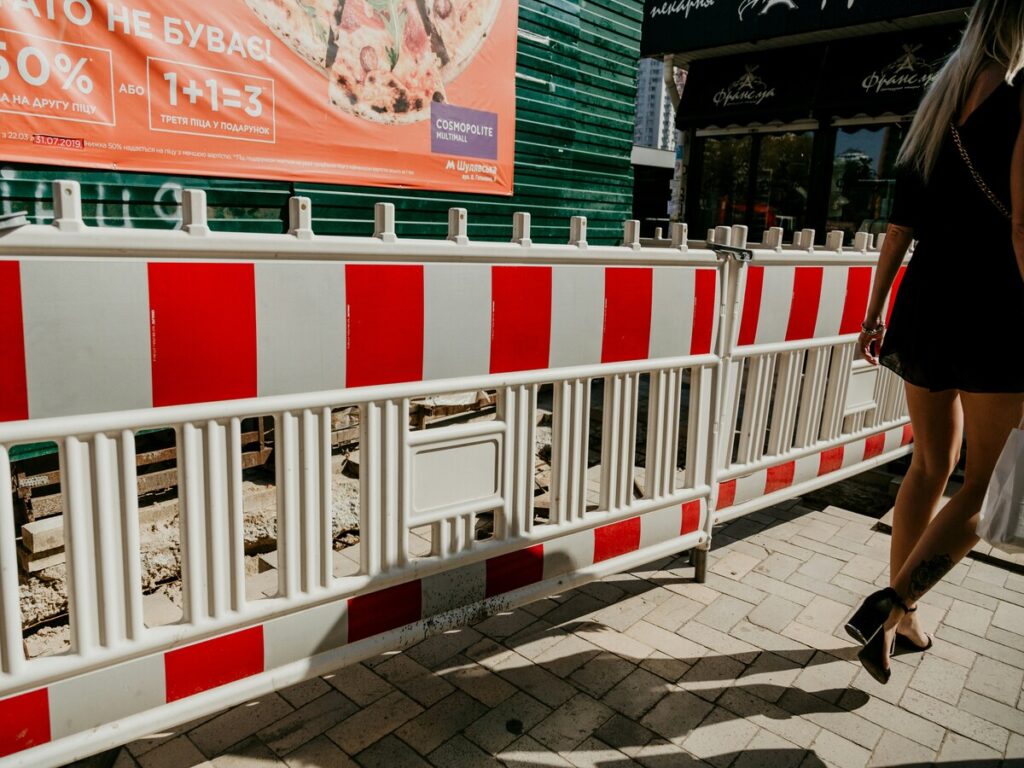
Fonction et utilisation
Les barrières et les barricades ne font pas le même travail. Des barrières de sécurité empêchent les voitures d'entrer dans des endroits dangereux. Ils gardent les travailleurs, les gens qui marchent, et les conducteurs en sécurité. Les barrières aident également les voitures à guider et à arrêter les accidents. Les barricades sont différentes. Ils avertissent les conducteurs et leur montrent où aller. Les barricades n'arrêtent pas les voitures. Ils aident à contrôler comment les gens et les voitures se déplacent.
Les barrières de sécurité protègent les gens en bloquant les voitures. Les barricades aident en étant facile à voir et en montrant le chemin.
Voici une table qui montre ce que chacun fait:
| Aspect | Barrières | Barricades |
|---|---|---|
| Fonction primaire | Confinement et protection des véhicules | Avertissement visuel et guidage de la circulation |
| Force structurelle | Construit pour résister aux impacts des véhicules | Léger, Principalement des repères visuels |
| Matériaux typiques | Béton, plastique robuste (eau / sable) | Plastique ou métal, Souvent avec des surfaces réfléchissantes |
| Installation | Nécessite des machines, pour une utilisation à long terme ou semi-permanente | Installé manuellement, Pour une utilisation à court terme ou temporaire |
| Exemples | Barrières en jersey, garde-corps, barrières à eau | Type I, Ii, III Barricades, Trame, cônes de circulation |
| Normes réglementaires | Doit rencontrer la saveur de crash (Nchrp 350 ou écraser) | Doit avoir des feuilles de réflexion par mutcd |
| But dans les projets | Protéger les travailleurs, piétons, et maintenir le flux de trafic | Alerte des automobilistes, indiquer les fermetures ou les dangers |
Ce tableau montre comment les barrières et les barricades aident de différentes manières.
Matériaux et résistance
Les barrières de sécurité sont fabriquées à partir de choses fortes comme le béton, acier, ou plastique dur. Barrières en béton, Comme des barrières de jersey, sont lourds et durent longtemps. Ils arrêtent les voitures et restent forts pendant des années. Les barrières à eau utilisent du plastique et sont remplies d'eau ou de sable. Cela les rend faciles à déplacer lorsqu'ils sont vides mais forts lorsqu'ils sont pleins. Barrières métalliques, Fabriqué en acier, ne rouille pas et sont difficiles à casser. Ces barrières sont bonnes pour les endroits avec beaucoup de danger et doivent durer.
Les barricades sont plus légères. Les barricades en plastique sont simples à transporter et à mettre en place. Ils sont les meilleurs pour les travaux courts. Barricades métalliques, Fabriqué en acier ou en aluminium, dure plus longtemps et sont plus forts. Les barricades en filet utilisent l'acier ou le plastique et ne pas souffler dans le vent. Les barricades sont brillantes et ont des bandes brillantes pour que les gens puissent les voir. Le matériau utilisé change combien de temps ils durent et leur sécurité.
Les barrières de sécurité sont très fortes et peuvent prendre un grand coup. Les barricades sont faciles à déplacer et faciles à voir.
Installation et mobilité
La mise en place des barrières de sécurité prend du temps et des machines spéciales. Les travailleurs utilisent de grands outils pour soulever et installer des barrières en béton ou en acier. Ces barrières restent longtemps au même endroit. Ils sont bons pour les emplois qui ont besoin d'une sécurité forte et durable. Le travail a besoin d'une planification minutieuse pour s'assurer que la barrière fonctionne bien.
Les barricades sont beaucoup plus faciles à utiliser. Les travailleurs peuvent les ramasser et les mettre à la main. Les barricades sont bonnes pour les emplois qui changent rapidement, Comme des événements ou de petites travaux routiers. Ils peuvent être déplacés ou emportés sans aucune machine. Cela aide les équipes à agir rapidement si les choses changent.
- Barrières de sécurité: Lourd, Besoin de machines, Restez dans un seul endroit pendant longtemps.
- Barricades: Lumière, facile à déplacer, installer rapidement, Utilisé pour de courtes temps.
Placement et durée
Les barrières de sécurité doivent être mises au bon endroit. Les travailleurs font une ligne claire entre les voitures et les zones de travail. Les barrières doivent bien s'asseoir ensemble et être maintenues serrées. Les équipes les vérifient souvent pour s'assurer qu'ils sont en sécurité. Ces barrières restent pour tout le travail, Parfois pendant des années. Ils sont meilleurs pour les routes très fréquentées ou les grands sites de construction.
Les barricades sont utilisées pour de courtes temps. Les équipes les utilisent pour montrer le danger, guides, ou contrôler les foules. Les barricades peuvent être installées rapidement et déplacées en cas de besoin. Ils sont bons pour les emplois qui changent beaucoup ou ont besoin d'une action rapide. Barricades Aide lors des événements, petites fixations routières, ou urgences.
Mettre des barrières et des barricades au bon endroit assure la sécurité des gens. Les équipes doivent choisir la bonne pour chaque travail pour obtenir les meilleurs résultats.
Table de comparaison: Barrières vs. Barricades
| Fonctionnalité | Barrières | Barricades |
|---|---|---|
| Fonction | Protection physique, confinement des véhicules | Avertissement visuel, guidage de la circulation |
| Matériels | Béton, acier, plastique robuste | Plastique, métal, engrener |
| Force | Résistance à l'impact élevé | Faible à modéré, principalement visuel |
| Installation | Machines nécessaires, processus technique | Manuel, rapide, flexible |
| Mobilité | Faible, Fixé en place | Haut, facile à déplacer |
| Placement | À long terme, emplacements fixes | À court terme, Emplacements flexibles |
| Durée | Semaines à années | Heures à des semaines |
| Entretien | Chèques réguliers, réparation structurée | Nettoyage simple, Remplacement facile |
| Visibilité | Comprend souvent des bandes réfléchissantes | Couleurs vives, surfaces réfléchissantes |
| Efficacité | Élevé pour la protection contre l'accident | Haut pour les conseils et l'avertissement |
Implications pratiques pour la sécurité routière et les projets de construction
Choisir le bon outil rend les travaux plus sûrs et meilleurs. Les barrières de sécurité protègent les travailleurs et les conducteurs sur des routes très fréquentées et de longs emplois. Les barricades aident à contrôler les foules, guides, et faire preuve de danger lors de courts emplois ou événements. L'utilisation du bon arrête des accidents, suit la loi, Et continue de bien travailler.
Choisir la bonne option
Évaluation du projet
Chaque projet a besoin d'un regard de près avant de choisir une barrière ou une barricade. Entrepreneurs, organisateurs d'événements, et les gestionnaires de la circulation doivent poser des questions sur les principaux dangers. Ils devraient penser au travail, Combien de travailleurs il y a, Et à quel point la route est occupée. S'il y a beaucoup de gros véhicules et de nombreux travailleurs, De fortes barrières de sécurité sont nécessaires. Ces obstacles assurent la sécurité des travailleurs et empêchent les voitures d'entrer dans les zones risquées. Pour un petit événement ou un travail de route rapide, Une barricade pourrait suffire. Les barricades aident à guider les personnes et les voitures, mais n'arrêtent pas les véhicules.
L'évaluation du projet signifie également vérifier attentivement le site. Les équipes doivent regarder où les gens et les véhicules entrent et sortent. Ils devraient voir comment tout le monde se déplace dans la région. Une bonne planification aide à mettre chaque barrière ou barricade au meilleur endroit. Cela protège tout le monde et aide le projet.
Une bonne évaluation de projet arrête les accidents et protège les travailleurs. Il aide également à suivre la loi et à économiser de l'argent en évitant les erreurs.
Facteurs à considérer
Choisir la bonne option signifie penser à beaucoup de choses. Le tableau ci-dessous montre des questions importantes à poser:
| Facteur | Question clé |
|---|---|
| Ajustement du cas d'utilisation | La barrière convient-elle à votre environnement et à votre tâche? |
| Conformité | Est-il conforme aux règles de sécurité locales? |
| Durabilité | Peut-il résister à la temps et porter? |
| Configuration de la facilité | Une personne peut-elle le déployer rapidement? |
| Portabilité | Est-il facile de stocker et de transporter? |
| Valeur de coût | Cela offre-t-il une bonne valeur au fil du temps? |
| Confiance en fournisseur | Le fournisseur est-il fiable et réactif? |
Les équipes doivent également vérifier les règles locales. Certains endroits ont des lois strictes sur les obstacles de sécurité ou les barricades à utiliser. Le bon choix doit suivre ces règles pour garder le projet légal et sûr. La durabilité est également importante. Une barrière pour un long travail doit durer par le mauvais temps et beaucoup d'utilisation. Pour les travaux courts, Une barricade légère est plus facile à déplacer et à installer.
La visibilité est une autre chose clé à penser. Les obstacles et la sécurité Les barricades doivent être faciles à voir, Même la nuit ou dans le brouillard. Les couleurs vives et les bandes brillantes aident les conducteurs et les travailleurs à les repérer rapidement. Les équipes devraient également prévoir de vérifier souvent les barrières. Les barrières doivent rester en place et ne pas bouger pendant le travail.
D'autres choses à penser sont le coût et la confiance à votre fournisseur. Les barrières en béton coûtent plus cher au début mais durent plus longtemps, Même par mauvais temps. Les barrières en acier peuvent être moins chères mais ont besoin de plus de réparations dans des endroits enneigés. Les équipes devraient choisir une barrière qui correspond à son budget et à ses besoins locaux.
Scénarios du monde réel
De vrais projets montrent pourquoi la sélection de la bonne barrière ou de la barricade est importante. Dans un projet de santé, Les équipes qui ont choisi les bonnes barrières et les bonnes plans ont fait beaucoup mieux. Ils ont eu plus de succès et ont gardé les gens plus en sécurité. Quand les équipes n'ont pas bien vérifié les barrières, Leurs projets ne sont pas aussi bien allés. Cela montre que le bon choix peut faire une grande différence.
Dans un marathon de la ville, Les organisateurs ont utilisé des barricades légères. Celles-ci étaient faciles à déplacer et à installer le long de la longue route. Cela a gardé des coureurs et des foules en sécurité. À un festival occupé, Les organisateurs ont choisi des barrières de sécurité lourdes. Ces barrières ont résisté à de grandes foules et ont empêché les gens de pousser dans des zones risquées. Sur une rue de la ville avec beaucoup de voitures, Les équipes ont utilisé des barrières de sécurité en béton. Ces obstacles ont protégé les travailleurs de la circulation et ont assuré le site en sécurité pendant des semaines.
Choisir les bonnes barrières de sécurité ou les barricades gardent tout le monde en sécurité, suit la loi, et aide le projet à réussir.
Dans tous les cas, La barrière ou la barricade droite correspondait à ce dont le projet avait besoin. Les équipes ont regardé la taille, longueur, et type de travail. Ils ont vérifié combien de travailleurs et de véhicules seraient là. Ils ont pensé au temps, coût, et les règles de sécurité. Cette planification minutieuse a aidé à arrêter les accidents et à maintenir les projets sur la bonne voie.
Normes réglementaires
Règles britanniques et australiennes
Le Royaume-Uni et l'Australie ont tous deux des règles solides pour les barrières et les barricades. Au Royaume-Uni, PAS 13 est une norme importante pour les barrières de sécurité. Le British Standards Institute a fait un PAS 13 avec l'aide de groupes de sécurité et d'experts. Cette norme explique comment mettre en place, test, et vérifier les barrières de sécurité. Il donne également des conseils sur le contrôle du trafic, Garder les gens à l'écart, et rendre les barrières faciles à voir. TÜV Nord checks PAS 13 obstacles pour s'assurer qu'ils sont en sécurité.
PAS 13 parle de la taille des obstacles et de la façon dont les gens peuvent voir au-delà. Il couvre également comment protéger les bâtiments et l'équipement. La norme donne des conseils sur l'utilisation des couleurs pour faire ressortir les barrières. Les grandes entreprises comme Jaguar / Land Rover et DHL ont aidé à établir ces règles, Alors ils travaillent pour de nombreux emplois.
L'Australie et la Nouvelle-Zélande utilisent les normes AS / NZS pour les barrières et les barricades. Ces règles changent les normes du monde pour répondre aux besoins locaux. Certifications comme ISO, Marquage CE, et UL montrent que les produits sont en sécurité partout. Les lois sur la sécurité incendie en Australie disent que les obstacles doivent laisser les gens partir en toute sécurité en cas d'urgence. Les fabricants doivent utiliser des matériaux qui ne brûlent pas facilement et fonctionnent avec des alarmes incendie. Les managers doivent suivre les nouvelles règles pour assurer la sécurité de chacun.
Suivre ces règles assure la sécurité des gens et s'assure que les projets suivent la loi.
Conseils de conformité
Les entrepreneurs et les organisateurs d'événements doivent respecter les règles de sécurité pour éviter les amendes et assurer la sécurité des gens. Le tableau ci-dessous montre quelques conseils importants:
| Norme de conformité | Exigences et recommandations clés | Importance pour les entrepreneurs et les organisateurs d'événements |
|---|---|---|
| OSHA | Les barricades doivent marquer les zones de danger et laisser passer les gens en toute sécurité. | Arrête les blessures et les problèmes juridiques. |
| Ada | Les barrières doivent être faciles à trouver pour les personnes qui ne peuvent pas bien voir et donner des chemins en douceur. | Rend les endroits ouverts à tous et évite les amendes. |
| Mutcd | Les barricades doivent utiliser les bonnes couleurs, rayures, Et soyez facile à voir. | Aide les conducteurs à rester en sécurité et à suivre la loi. |
| ASTM & Ansi | Les barricades doivent être fortes et ne pas tomber. | Montre que le produit est bon et sûr. |
| Sélection des vendeurs | Choisissez les vendeurs de confiance avec la preuve des règles suivantes. | Abaisse les chances de enfreindre les règles. |
| Inspection | Vérifiez et réparez souvent les barrières. | Gardez tout le monde en sécurité pendant le travail ou l'événement. |
Les organisateurs de l'événement doivent toujours utiliser les bonnes barricades pour bloquer le danger et guider les foules. Travailler avec de bons vendeurs s'assure que tout l'équipement est sûr et suit les règles locales. La vérification des obstacles les maintient souvent bien pour tout l'événement ou le travail.
L'utilisation de ces conseils aide les équipes à maintenir la sécurité élevée et à suivre toutes les règles.
La cueillette entre les barrières et les barricades de sécurité change à quel point un projet est sûr. Le tableau ci-dessous montre les principales façons dont ils sont différents:
| Fonctionnalité | Barrières (Trafic) | Barricades (Contrôle des foules) |
|---|---|---|
| Objectif principal | Sécurité des véhicules | Sécurité des piétons |
| Matériel | Robuste, résistant à l'impact | Léger, portable |
| Utiliser | À long terme, zones à haut risque | À court terme, placement flexible |
Choisir le bon maintient les travailleurs, conducteurs, Et les gens qui marchent en sécurité. Ne pas demander aux experts peut signifier les problèmes de sécurité manquants, avoir des retards, ou enfreindre la loi. Les experts disent de vérifier ce dont votre projet a besoin, Choisissez les bons outils, et utiliser de bons fournisseurs. Pour obtenir la meilleure sécurité, Vérifiez toujours ce qui est nécessaire et demandez une aide experte.
FAQ
Quelle est la principale différence entre une barrière et une barricade?
Une barrière arrête les voitures et protège les gens ou les choses. Une barricade avertit les conducteurs ou leur montre où aller. Les barrières sont fortes et bloquent les voitures. Les barricades aident les conducteurs à voir le danger et à trouver la bonne façon.
Quand un entrepreneur devrait-il utiliser une barrière au lieu d'une barricade?
Les entrepreneurs utilisent des obstacles pour de longs emplois ou où les voitures pourraient aller dans des endroits risqués. Les barrières gardent les travailleurs et les machines à l'abri des voitures. Les barricades sont meilleures pour des emplois ou des événements courts lorsque vous n'avez besoin que de guider les gens.
Les barrières et les barricades sont-elles nécessaires pour répondre aux normes de sécurité?
Oui, Les deux doivent suivre les règles de sécurité locales. Au Royaume-Uni, Les barrières doivent rencontrer PAS 13. Les barricades ont besoin de couleurs vives et de bandes brillantes. Suivre ces règles protège tout le monde et arrête des amendes.
Une personne peut-elle installer une barrière ou une barricade?
Une personne peut mettre en place une barricade car elle est légère et simple à déplacer. Les barrières sont lourdes et ont besoin de machines ou d'une équipe pour les mettre en toute sécurité.
Les barrières et les barricades de sécurité ont-elles besoin de contrôles réguliers?
Oui, Les équipes doivent vérifier souvent les deux. Les barrières ont besoin de contrôles de dommages ou s'ils ont déménagé. Les barricades ont besoin de chèques pour s'assurer qu'ils sont faciles à voir et au bon endroit.

